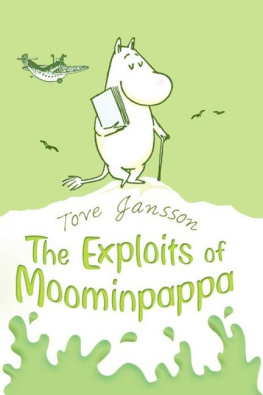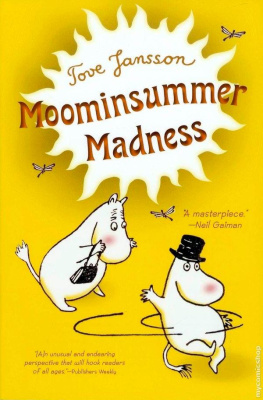Theoretically grounded and based on extensive original research, this exploration of the experiences of young people in custody in Sweden is a useful addition to the literature on child imprisonment. Its focus on open custody as a potential mechanism for reducing reoffending will be of considerable interest to academics, practitioners and policy makers in a wide range of jurisdictions.
Tim Bateman, Reader in Youth Justice, University of Bedfordshire, UK
Tove Petterssons carefully constructed mixed-method study of youth custody in Sweden presents a rare comparative analysis of the experiences and long-term effects of time spent in open and closed custodial institutions. Her insightful and theoretically-informed inquiry identifies the relevance of young peoples contact with their families and the community outside the institution for their successful reintegration following release. Her research adds valuable nuance to our understanding of the impact of youth custody for it illustrates the importance of paying attention to the conditions of confinement. Anyone with an interest in state responses to serious offending by young people will find this book well worth the read.
Caroline Lanskey, Lecturer in Applied Criminology,
University of Cambridge, UK
Young Offenders and Open Custody
Young offenders given custodial sentences in youth institutions constitute an important group in the context of crime prevention research, given that offenders within this group are at high risk of re-offending or continuing with a criminal career into adulthood. This book explores the significance of custodial openness for children and youths and how this environment affects future desistance from crime.
In Young Offenders and Open Custody, Tove Pettersson provides powerful support for the view that the experience of more open custodial forms during the youth custody sentence is of significance both for providing incarcerated youths with a more humane environment and for the likelihood of a positive outcome following their release. Building upon detailed interviews with convicted youths and staff at the special approved homes in Sweden, this book offers unique insights into the effect of punishment on young offenders and their understanding of social control.
Drawing upon quantitative and qualitative data, this book examines levels of re-offending over time among youths sentenced to custody, and considers the impact of more open sentences. This book will be useful reading for students and researchers engaged in youth and juvenile justice, juvenile delinquency, and sentencing and punishment.
Tove Pettersson is Head of Department and Professor at the Department of Criminology, Stockholm University, Sweden.
Routledge Frontiers of Criminal Justice
International Developments and Practices in Investigative Interviewing and Interrogation
Volume 1: Victims and witnesses
Edited by David Walsh, Gavin Oxburgh, Allison Redlich and Trond Myklebust
International Developments and Practices in Investigative Interviewing and Interrogation
Volume 2: Suspects
Edited by David Walsh, Gavin Oxburgh, Allison Redlich and Trond Myklebust
Punishing the Other
The social production of immorality revisited
Anna Eriksson
Improving Criminal Justice Workplaces
Translating theory and research into evidence-based practice
Paula Brough, Jennifer Brown and Amanda Biggs
Experiencing Imprisonment
Research on the experience of living and working in carceral institutions
Edited by Carla Reeves
Restorative Justice in Transitional Settings
Edited by Kerry Clamp
Prisoner Radicalization and Terrorism Detention Policy
Institutionalized Fear or Evidence-Based Policy-Making?
Tinka M. Veldhuis
Drugs, Evidence, and Policy
The Shaping of Belgian Drug Policy, 19962003
Julie Tieberghien
Restorative Policing
Concepts, Theory and Practice
Kerry Clamp and Craig Paterson
The Penal Voluntary Sector
Philippa Tomczak
Transforming Summary Justice
Modernisation in the Lower Criminal Courts
Jennifer Ward
Stop and Search and Police Legitimacy
Ben Bradford
Young Offenders and Open Custody
Tove Pettersson
First published 2017
by Routledge
2 Park Square, Milton Park, Abingdon, Oxon OX14 4RN
and by Routledge
711 Third Avenue, New York, NY 10017
Routledge is an imprint of the Taylor & Francis Group, an informa business
2017 Tove Pettersson
The right of Tove Pettersson to be identified as author of this work has been asserted by her in accordance with sections 77 and 78 of the Copyright, Designs and Patents Act 1988.
All rights reserved. No part of this book may be reprinted or reproduced or utilised in any form or by any electronic, mechanical, or other means, now known or hereafter invented, including photocopying and recording, or in any information storage or retrieval system, without permission in writing from the publishers.
Trademark notice: Product or corporate names may be trademarks or registered trademarks, and are used only for identification and explanation without intent to infringe.
British Library Cataloguing in Publication Data
A catalogue record for this book is available from the British Library
Library of Congress Cataloging in Publication Data
Names: Pettersson, Tove, author.
Title: Young offenders and open custody / Tove Pettersson. Description: Abingdon, Oxon ; New York, NY : Routledge, 2017. | Series: Routledge frontiers of criminal justice ; 43 | Includes bibliographical references and index.
Identifiers: LCCN 2016028736 | ISBN 9781138120921 (hardback) | ISBN 9781315651446 (ebook)
Subjects: LCSH: Juvenile detentionSweden. | Juvenile delinquentsRehabilitationSweden. | Juvenile detention homesSweden. | Juvenile correctionsSweden. | Alternatives to imprisonmentSweden.
Classification: LCC HV9182 .P47 2017 | DDC 365/.42dc23
LC record available at https://lccn.loc.gov/2016028736
ISBN: 978-1-138-12092-1 (hbk)
ISBN: 978-1-315-65144-6 (ebk)
Typeset in Times New Roman
by Wearset Ltd, Boldon, Tyne and Wear
In my work with this book, I have been helped by a large number of people, for whose assistance I am, of course, very grateful. First and foremost, however, I would like to thank the youths who have openly and often very candidly shared with me their experiences of being held in a secure institution. Many thanks also to the staff members at special approved homes who have generously allowed me to share their experiences of working with the issues discussed in the book.
I would also like to thank my colleagues at Stockholm Universitys Department of Criminology, who participated in a seminar to discuss an early draft of this book and provided valuable input. A special thank you to Ingrid Lander and Anders Nilsson, who served as principal discussants and who provided many important comments and suggestions. My colleagues Julia Sandahl and Fredrik Sivertsson have also been particularly helpful, generously making time to discuss a number of methodological issues. I would also like to extend special thanks to Olof Bckman, of Stockholm Universitys Swedish Institute for Social Research (SOFI), whose assistance with STATA and the Propensity Score Matching module has been invaluable. The responsibility for any remaining errors and omissions is, of course, mine alone.













